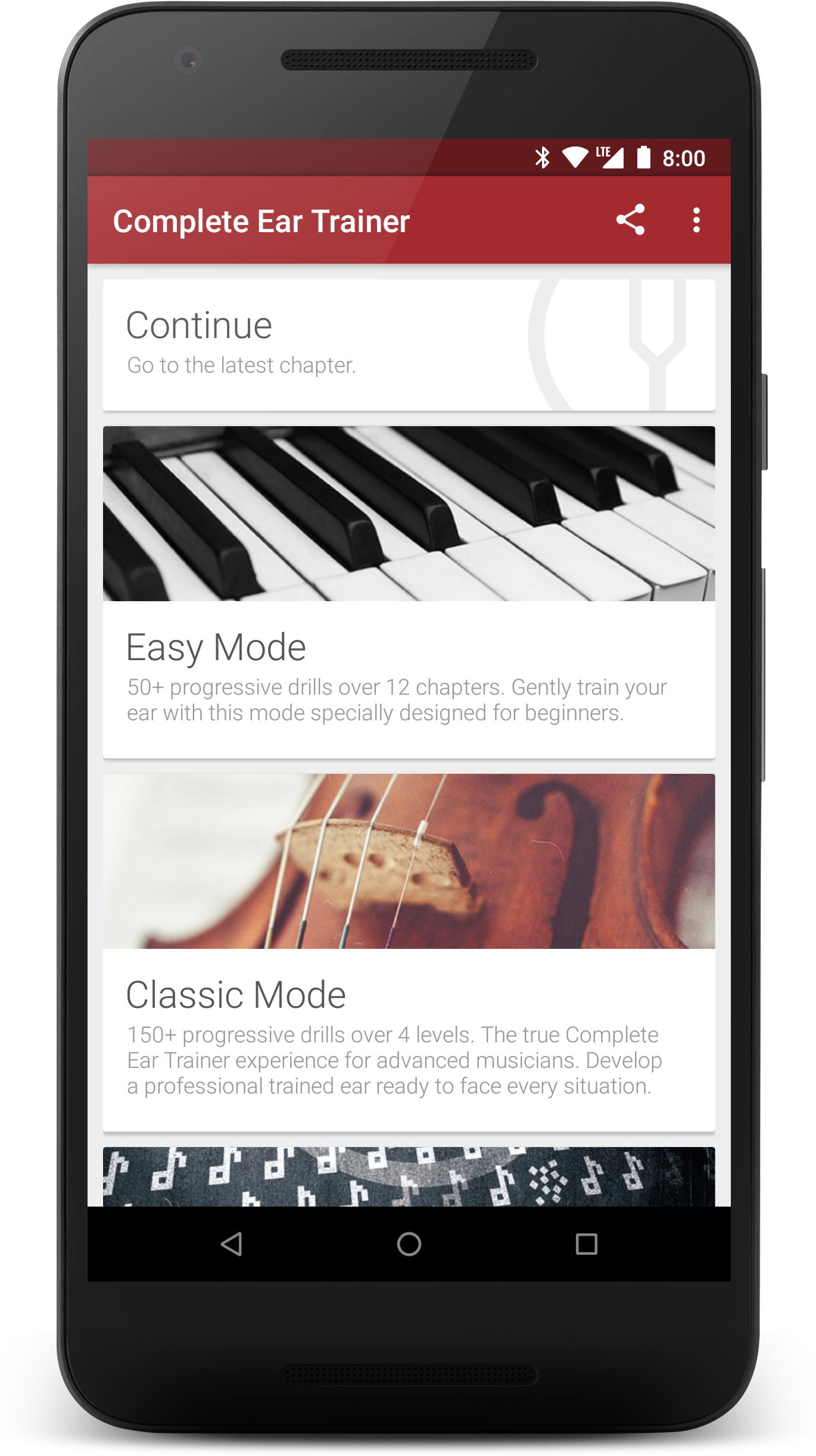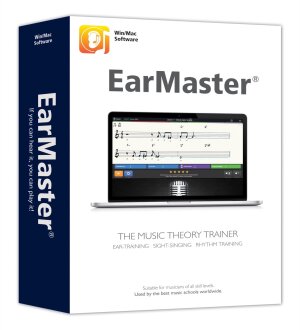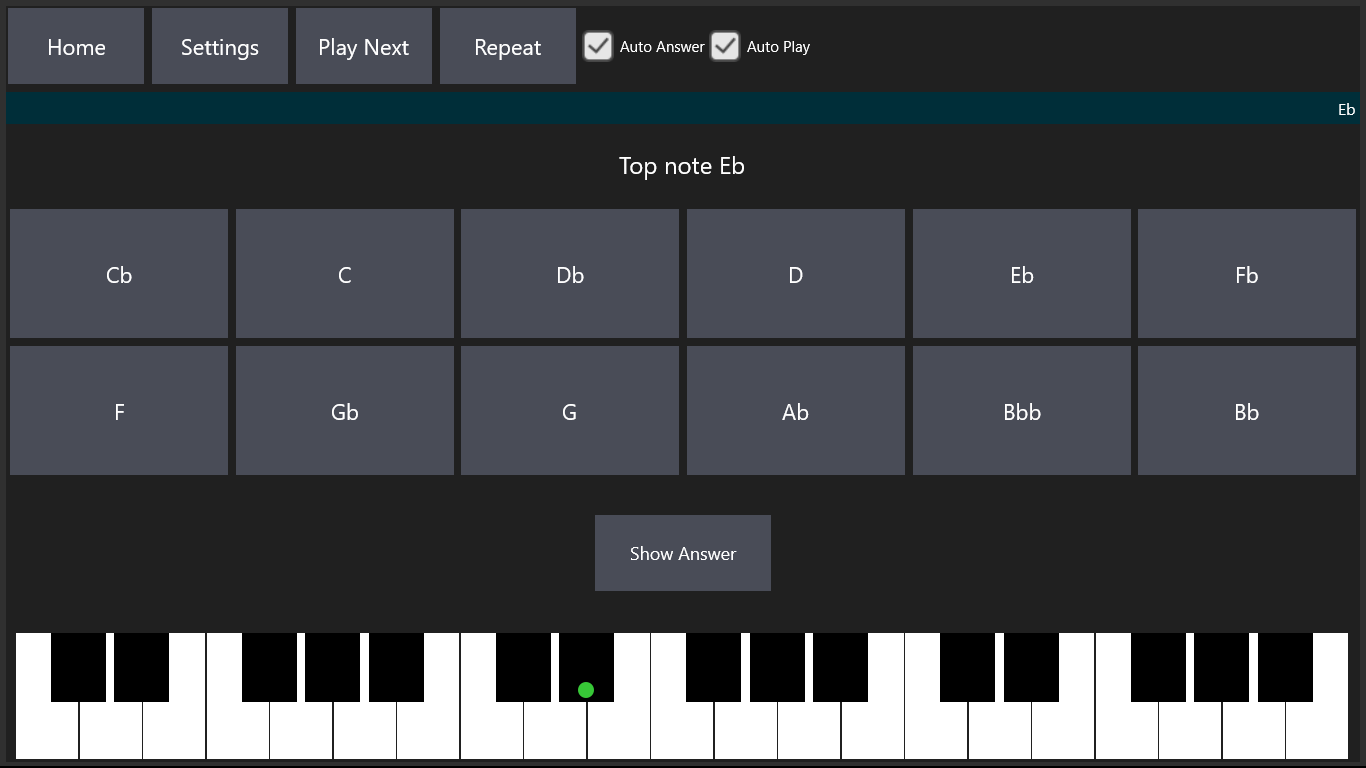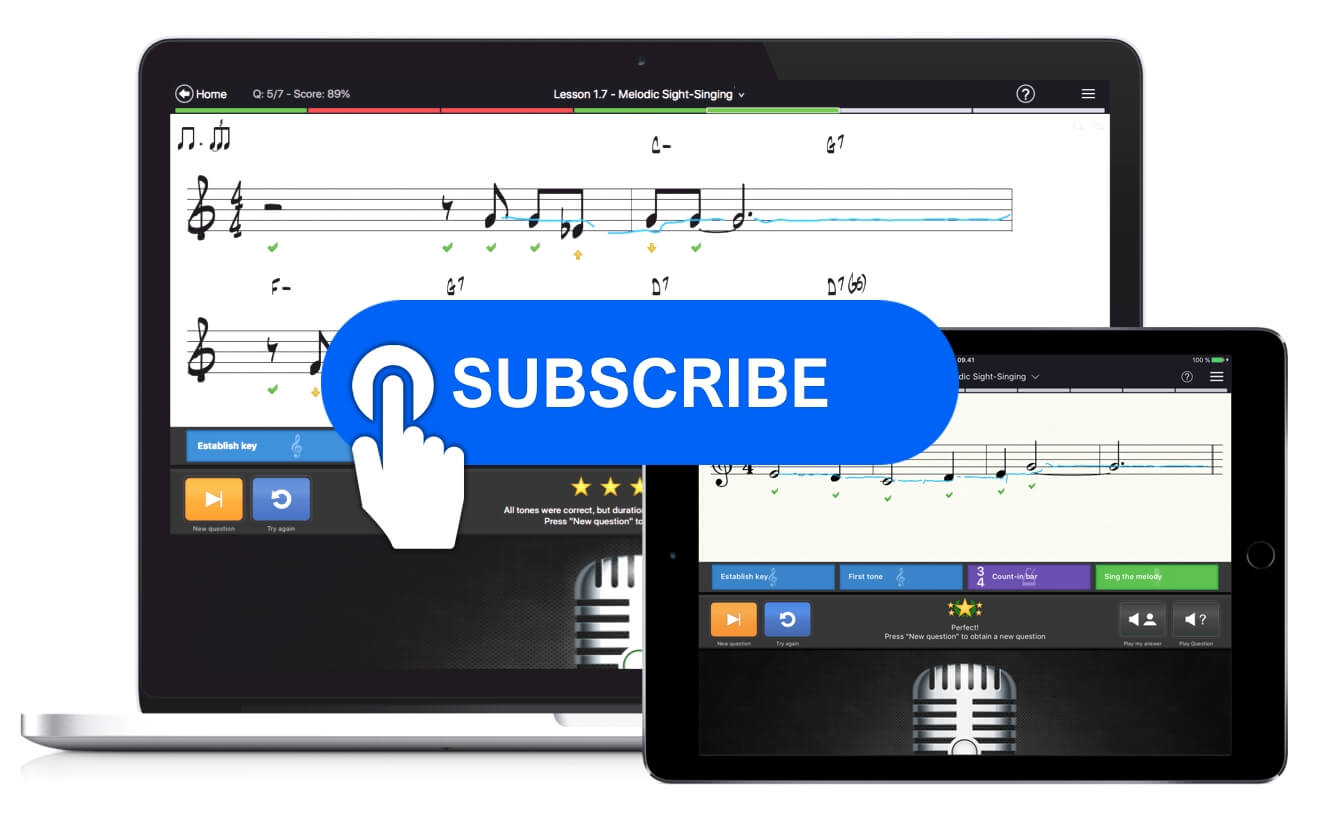
The questions in the exercises are randomly generated so you can do them over and over again as many times as you like to continue to hone your skills. (You can even play the virtual piano if you like!)Īs you work through the exercises, statistics are collected so that you can see your progress. To aid your progression you can compare the different options after answering. A virtual piano keyboard and note view in each exercise helps you visually understand and analyze the notes that have been played. Melody Exercises (38 different exercises)Įach exercise has a short description of its purpose and optional preview. Relative Pitch (12 different exercises) Note relative to chord (18 different exercises) Chord Progressions (25 different exercises) Chord Inversions (24 different exercises) Chord Identification (48 different exercises) Interval Identification (30 different exercises)



Interval Comparison (48 different exercises) No matter what level your musical hearing skills are, Ear Trainer will help to hone them. No need to be an expert, Ear Trainer is suitable for all users from beginner to very advanced. It is also possible to create custom exercises so that you can practice exactly what you need. It has over 260 individual exercises that are conveniently placed into nine different areas of study. by Posted by GuitarOrb.Listening is the most important skill in music, and this app will help you to listen better.Įar Trainer is an educational tool designed for musicians, music students and anyone interested in improving ones musical ear. If you would like to practice picking a chord type and its inversion, you can use our chord inversion ear trainer. For example, when you have developed a reasonable ability to pick all the chord types in root position, close spacing over one octave its quite surprising that even testing between only say major and minor chords can sometimes trick you up when you allow inversion as well as either spacing or octaves.Īnother note here is that when you allow inversions you are still only picking the chord type rather than trying to pick the inversion as well. I’m hoping this will allow you to develop a more versatile ability to pick chord types rather than simply becoming accustomed to the sound of a chord in say root position, close spacing. If you allow inversions and select open or close spacing and one or more octaves, there will typically be over 10 ways the app might arrange notes to form the chord. The aim with providing these different options is so that the options can be set in a way that for any given root note and chord type, there are a number of ways the chord can be played. Note that each chord has all the notes of the chord in it, it is simply whether these notes are adjacent or if there is spacing between them.Īdditionally, each chord can be played in one octave, multiple octaves or either. Ill try to illustrate this as follows:Ĭ Major Scale: C D E F G A B C D E F G A B C In an open spacing chord, adjacent notes of the chord may not be the next note in the chord. In a close spacing chord, each note of the chord is adjacent to each other (such as C E G in c major). Chords can be played in close spacing, open spacing or either.

Chord inversions are when a note other than the root note (such as the 3rd or the 5th) is the lowest note of the chord. You can select for the chord to be played only in root positions or to include inversions. You can also look at your accuracy for each type of chord as well as your overall score.įor any given root note, each chord type can be played a number of ways. There are 10 different chord types and each type can be turned on or off to test any combination of these at a time. The app will play a chord and you try to pick the chord type such as major or minor. This app is designed to improve your ability to recognise chord types. * Note: for some 7th chords, if played in inversions they will necessarily span more than one octave. * Note: for some 7th chords, if played in inversions or over multiple octaves they will always be played as open spacing.


 0 kommentar(er)
0 kommentar(er)
